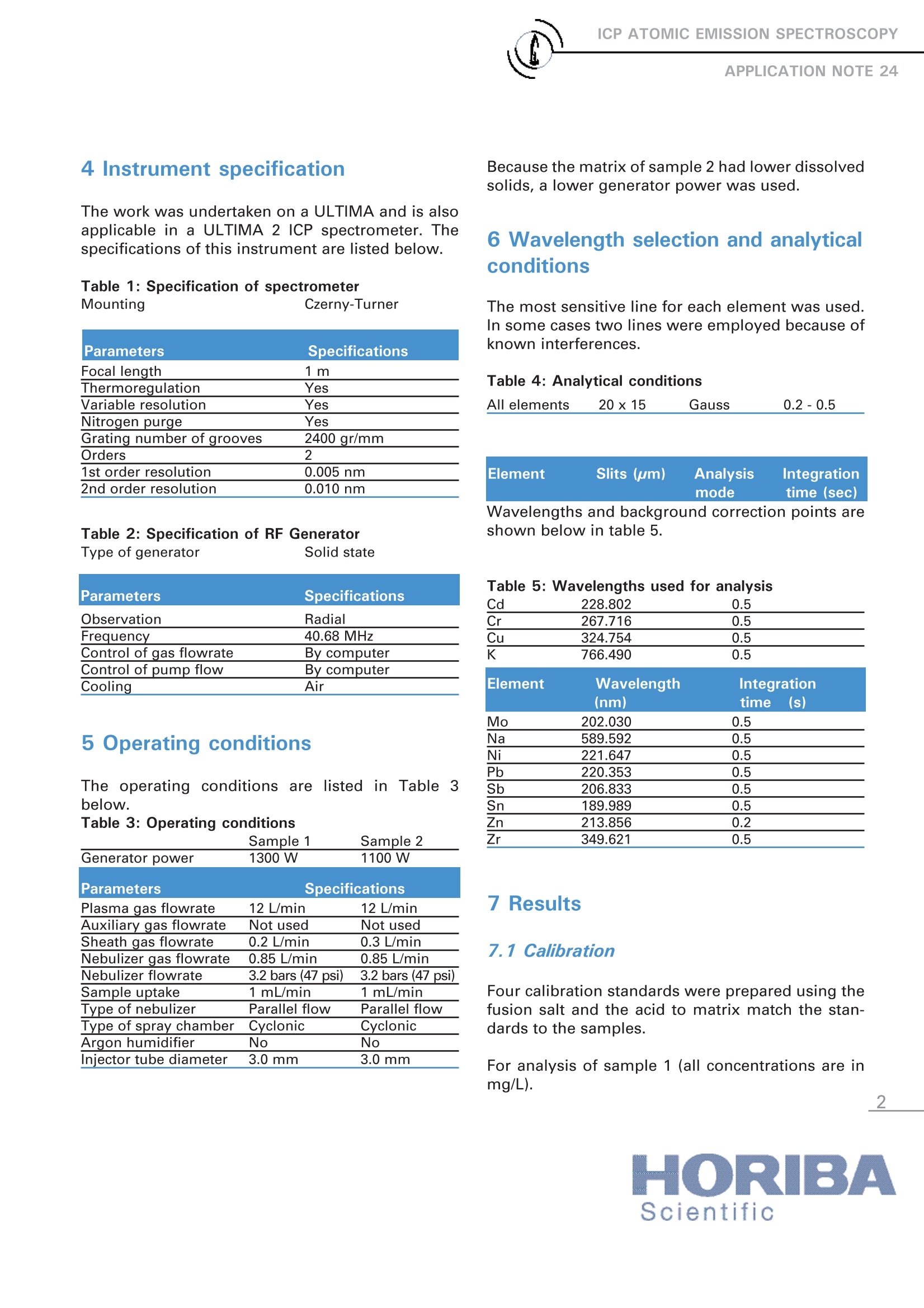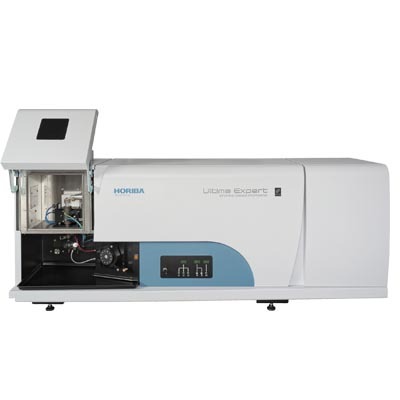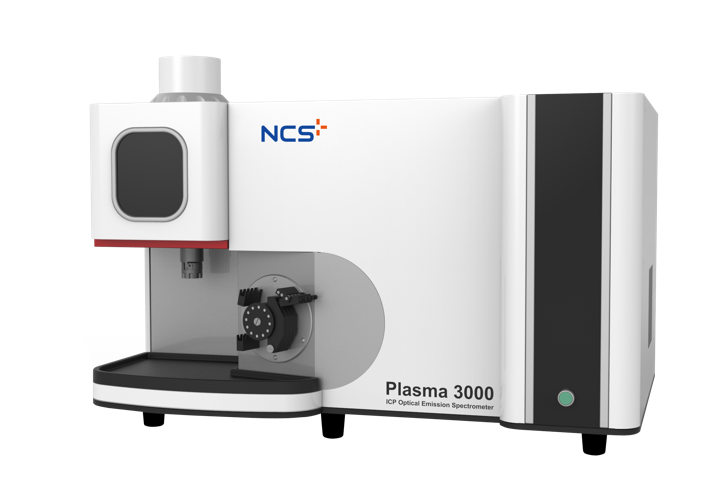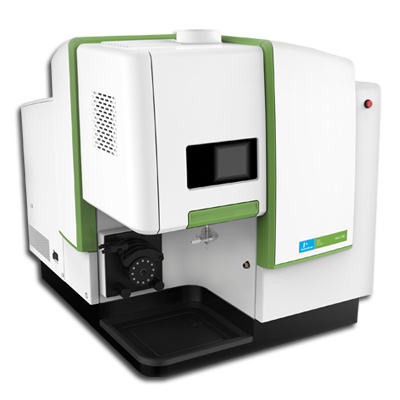方案详情文
智能文字提取功能测试中
ICP ATOMIC EMISSION SPECTROSCOPYAPPLICATION NOTE 24 Analysis of Dust Samples Agnes COSNIER HORIBA Scientific Longjumeau, France Keywords: environment Elements: Cd, Cr, Cu, K, Mo, Na, Ni, Pb, Sb, Sn, Zn, Zr This Application Note examines the analysis ofdust samples using ICP-AES. There were anumber of elements of interest, including thealkalis. ICP-AES is a multi-element techniquethat allows for the fast analysis of more than 75elements on the Periodic table. 2 Principle 2.1 Technique used The elemental analysis of dust samples wasundertaken by Inductively Coupled PlasmaAtomic Emission Spectrometry (ICP-AES). Thesample is nebulized then transferred to anargon plasma. It is decomposed, atomized andionized whereby the atoms and ions are excited.We measure the intensity of the light emittedwhen the atoms or ions return to lower levels ofenergy. Each element emits light at characteris-tic wavelengths and these lines can be used forquantitative analysis after a calibration. 2.2 Wavelength choice The choice of the wavelength in a given matrixcan be made using the profile function, or byusing Win-Image, which is rapid semi-quantita-tive analysis mode using multiple wavelengths.The principle is the same in either case: recordthe scans of analytes at low concentration, andof the matrix. By superimposing the spectra, wesee possible interferences. LOD=k*BEC*RSDo The limits of detection are calculated using thefollowing formula: With: LOD limit of detection, k: equals to 3 for the normal 3-sigma values, BEC: Background equivalent concentration, RSDo: relative standard deviation of the blank. To calculate the LOD, a calibration curve is con-structed using two points, 0 ppm and 5 ppm, orsome concentration where the calibration is lin-ear. This calibration provides the BEC. TheRSDo is evaluated by running the blank tentimes. 3 Sample preparation Two types of sample preparation were exam-ined. The first method was used for the analysisof Cd, Cr, Cu, Mo, Ni, Pb, Sb, Sn, Zn, and Zr andthe second for Na and K. The composition of the prepared samples was: Sample 1:-2 g/L of dust salt-0.2g of fusion salt (H3BO3+K2CO3)- 100mL of 65% HNO3Sample 2:-0.4 g/L of dust salt- 50 mL of 37% HCI 4 Instrument specification The work was undertaken on a ULTIMA and is alsoapplicable in a ULTIMA 2 ICP spectrometer. Thespecifications of this instrument are listed below. Table 1: Specification of spectrometerMounting Czerny-Turner Parameters Specifications Focal length 1 m Thermoregulation Yes Variable resolution Yes Nitrogen purge Yes Grating number of grooves 2400 gr/mm Orders 2 1st order resolution 0.005 nm 2nd order resolution 0.010 nm Table 2: Specification of RF GeneratorType of generator Solid state Parameters Specifications Observation Radial Frequency 40.68 MHz Control of gas flowrate By computer Control of pump flow By computer Cooling Air 5 Operating conditions The operating conditions arelisted in Table 3below. Table 3: Operating conditions Sample 1 Sample 2 Generator power 1300 W 1100 W Parameters Specifications Plasma gas flowrate 12 L/min 12 L/min Auxiliary gas flowrate Not used Not used Sheath gas flowrate 0.2 L/min 0.3L/min Nebulizer gas flowrate 0.85 L/min 0.85 L/min Nebulizer flowrate 3.2 bars (47 psi) 3.2 bars (47 psi) Sample uptake 1mL/min 1 mL/min Type of nebulizer Parallel flow Parallel flow Type of spray chamber Cyclonic Cyclonic Argon humidifier No No Injector tube diameter 3.0 mm 3.0 mm Because the matrix of sample 2 had lower dissolvedsolids,a lower generator power was used. 6 Wavelength selection and analyticalconditions The most sensitive line for each element was used.In some cases two lines were employed because ofknown interferences. Table 4: Analytical conditions All elements 20x 15 Gauss 0.2 -0.5 Wavelengths and background correction points areshown below in table 5. Table 5: Wavelengths used for analysis Cd 228.802 0.5 Cr 267.716 0.5 Cu 324.754 0.5 K 766.490 0.5 Element Wavelength Integration (nm) time (s) Mo 202.030 0.5 Na 589.592 0.5 Ni 221.647 0.5 Pb 220.353 0.5 Sb 206.833 0.5 Sn 189.989 0.5 Zn 213.856 0.2 Zr 349.621 0.5 7 Results 7.1 Calibration Four calibration standards were prepared using thefusion salt and the acid to matrix match the stan-dards to the samples. For analysis of sample 1 (all concentrations are inmg/L). Element Std0 Std 1 Std 2 Std 3 Cd 0 2 Cr 0 2 20 Cu 0 2 20 Mo 0 2 Ni 2 Pb 0 20 500 Sb 0 2 Sn Zn 0 2 20 500 Zr 2 K 0 20 Na 0 2 20 Element Blank Std 1 Std 2 Std 3 7.2 Limits of detection The limits of detection are calculated using the for-mula in 2.3. Table 7: Limits of detection Element Wavelength BEC RSD LD (nm) (mg/L) Blank (%) (ug/L) Cd 228.802 0.0204 0.23 0.10 Cr 267.716 0.037 0.32 0.40 Cu 324.754 0.052 0.29 0.45 Mo 202.030 0.0158 0.45 0.20 Ni 221.647 0.0206 0.59 0.40 Pb 220.353 0.2359 0.45 3.20 Sb 206.833 0.221 0.54 3.60 Sn 189.989 0.0799 0.63 1.50 Zn 213.856 0.0532 0.44 0.70 Zr 349.621 0.0616 0.28 0.50 Element Wavelength BEC RSD Blank LD (nm) (mg/L) (%) (ug/L) K 766.490 0.7982 0.60 14.0 Na 589.592 0.364 0.50 5.50 The limits of detection depend on the level of con-taminants. For example, either the standards werecontaminated with Cu from the deionized water,acid or fusion salt. The contaminated level is esti-mated to be 0.362 mg/L. 7.3 Analytical results Table 8: Results Dust Concentration RSD (%)on Expected (mg/L) 3 replicates 0 Concentrations Cd 2.65 1.1 <2 Cr 2.97 0.5 3
-
1/4

-
2/4

还剩2页未读,是否继续阅读?
继续免费阅读全文产品配置单
HORIBA(中国)为您提供《灰尘中元素检测方案(ICP-AES)》,该方案主要用于废气中颗粒物检测,参考标准《暂无》,《灰尘中元素检测方案(ICP-AES)》用到的仪器有HORIBA Ultima Expert高性能ICP光谱仪。
我要纠错
推荐专场
相关方案






 咨询
咨询



